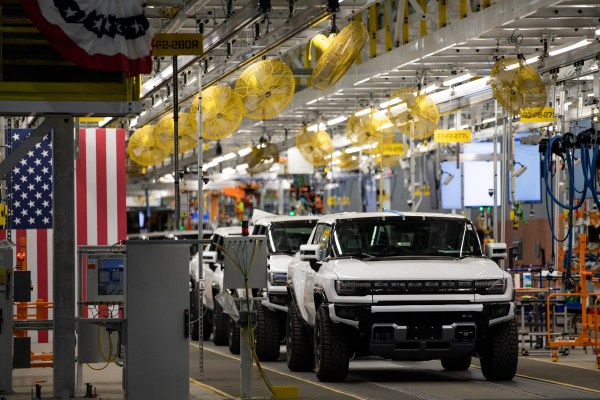[ad_1]
Vitality’s US division invests $15.5 billion in electrical vehicles

The US Division of Energy is offering $15.5 billion to help the transition to electrical vehicles.
President Joe Biden’s funding agenda in America requires very important $15.5 billion in funding from america Division of Energy (DOE) to speed up the transition to electrical vehicles (EV) and construct a strong ecosystem of residence manufacturing. By providing financial support, the DOE goals to encourage automakers and suppliers to reuse their crops to produce electrical, hybrid and hydrogen gas cell autos. This strategic funding is in keeping with the administration’s objective to create high-paying manufacturing jobs nationwide.
Promotion of automotive manufacturing conversions
Almost the entire funding, roughly $12 billion, will doubtless be allotted to automotive manufacturing conversion actions for gentle, medium and heavy-duty electrical autos. This funding may ultimately be delivered by way of a mixture of a $2 billion grant and a $10 billion mortgage. By encouraging automakers and suppliers to remodel their manufacturing capabilities, DOE goals to drive mass adoption of electrical vehicles and scale back reliance on conventional inside combustion engine vehicles.
Advances within the manufacturing of home batteries
Along with supporting automakers, DOE will allocate $3.5 billion to ramp up home battery manufacturing. Funding is prone to go in direction of establishing battery firms and bettering the nationwide grid infrastructure. Traditionally, battery provides and parts have been largely imported from numerous nations, particularly China. Nonetheless, the disruptions attributable to the COVID-19 pandemic have highlighted the necessity for extra self-sustaining provide chains. By investing in home battery manufacturing, america can scale back its dependence on imports and create a safe and sustainable provide of battery provides.
This funding for the availability and manufacturing of batteries represents the second tranche of support offered by the DOE. This demonstrates the federal authorities’s dedication to fostering the event of a strong battery firm in america.
Onshoring Fashions and Inflation Exemption Act
A rising variety of automakers and battery producers have acknowledged the significance of constructing battery manufacturing services on American soil. The onshoring development has accelerated because the pandemic has disrupted worldwide provide chains, making entry to key battery suppliers problematic. The change is in keeping with the passage of the Inflation Rebate Act (IRA) in August 2022, which gives very important incentives for home manufacturing. Nonetheless, Treasury administration continues to be in suspense over lots of the initiatives contained within the IRA.
know-how for occupation and sale of cash progress
The DOE’s many investments within the manufacturing of electrical family autos and batteries align with the Biden administration’s imaginative and prescient and foresight to create good-paying jobs for individuals in manufacturing. The presence of crops for car manufacturing can stimulate native economies and supply good-paying jobs to communities. The DOE will prioritize grants and funding for companies positioned in communities with a historical past of automotive manufacturing. Initiatives that intention to pay increased wages to productive staff and preserve collective bargaining agreements may be given priority.
conclusion
The US Division of Power’s $15.5 billion funding for the transition to electrical vehicles and home battery manufacturing is an important milestone within the nation’s effort towards a sustainable, self-sustaining auto business. By incentivizing automakers, suppliers and battery producers, DOE goals to speed up the adoption of electrical vehicles, enhance home manufacturing capabilities and create good-paying jobs. This strategic funding underscores the federal authorities’s dedication to a cleaner, greener future whereas selling monetary progress and resilience.
inquiries to ask
1. How a lot funding does the US Electrical Division provide for the transition to electrical autos?
The U.S. Division of Energy is offering $15.5 billion to help with the transition to electrical vehicles.
2. The place will a lot of the funding go?
Almost the entire funding, roughly $12 billion, will doubtless be allotted to automotive manufacturing conversion actions for gentle, medium and heavy-duty electrical vehicles.
3. What’s the focus of the $3.5 billion allocation?
The $3.5 billion allocation will cowl constructing battery firms and bettering the nation’s grid infrastructure, in addition to growing home battery manufacturing.
4. Why is home battery manufacturing wanted?
The disruptions as a result of COVID-19 pandemic have highlighted the significance of self-sustaining provide chains for battery provides. By investing in home manufacturing, america can scale back its dependence on imports and create a safe and sustainable provide of battery provides.
5. How does the funding align with the targets of the Biden administration?
The funding is in keeping with the Biden administration’s objective to create high-paying manufacturing jobs throughout the nation, particularly in communities with a historical past of auto manufacturing. The presence of crops for automotive manufacturing can stimulate native economies and supply good-paying jobs for communities.
Please see this hyperlink for extra info
[ad_2]
To entry further info, kindly check with the next link
